

“As soon as he appeared on his list, Death devoted himself to searching tirelessly for Germán Droghetti. He visited all the theaters, costume shops, and gambling casinos looking for the designer, but every time he arrived, he was always told that Germán had just left.
The designer was astute, and thanks to a powerful hunch that shook his chest, he sensed the presence of Death. He would cleverly sneak away and manage to avoid him by organizing all sorts of tricks to deceive him, as he did not want to meet him because he found he lacked elegance.
One hundred years he ran. So much so that Death found himself reluctantly asking the Devil for help finding him. And so, suddenly, the Devil opened up the earth at Germán's feet and dragged him, body and soul, to the depths of hell.
But the Devil did not count on the designer's cunning, who swiftly organized the demons and seized power in the underworld. He redesigned hell as a neoclassical theater, and the excited demons became his regisseurs, actors, singers, and dancers. They were all willing to do the impossible for German Droghetti, their new Lord.”
“En cuanto apareció en su lista, La Muerte se dedicó a buscar incansablemente a Germán Droghetti. Iba a todos los teatros, talleres de vestuario y casinos de apuestas buscando al diseñador, pero cada vez que llegaba, siempre le decían que Germán acababa de irse.
El diseñador era astuto y, gracias a una poderosa corazonada que le sacudía el pecho, lograba advertir la presencia de La Muerte. Se escabullía ingeniosamente y lograba esquivarla organizando todo tipo de puestas en escena para engañarla, pues no quería encontrársela por considerarla poco elegante.
Cien años estuvo arrancando. Tanto así, que La Muerte tuvo que, a regañadientes, pedirle ayuda al Diablo para poder encontrarlo. Así, de improviso, el Diablo abrió la tierra a los pies de Germán y lo arrastró en cuerpo y alma a la profundidad de los infiernos.
Sin embargo, el diablo no contaba con la sagacidad del diseñador, quien rápidamente organizó a los demonios y se hizo con el poder en el averno. Rediseñó el infierno como un teatro neoclásico y los demonios, entusiasmados, se volvieron sus regisseurs, actores, cantantes y bailarines. Todos estaban dispuestos a hacer hasta lo imposible por Germán Droghetti, su nuevo Señor.”
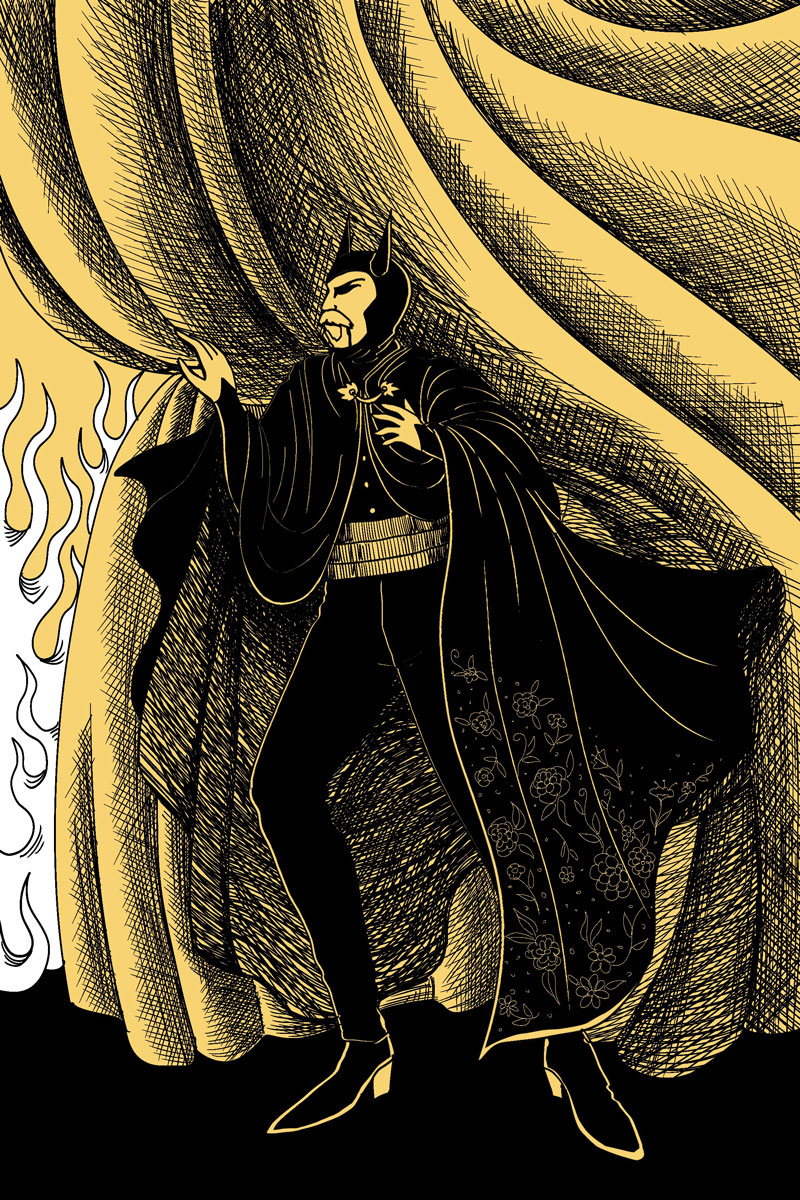
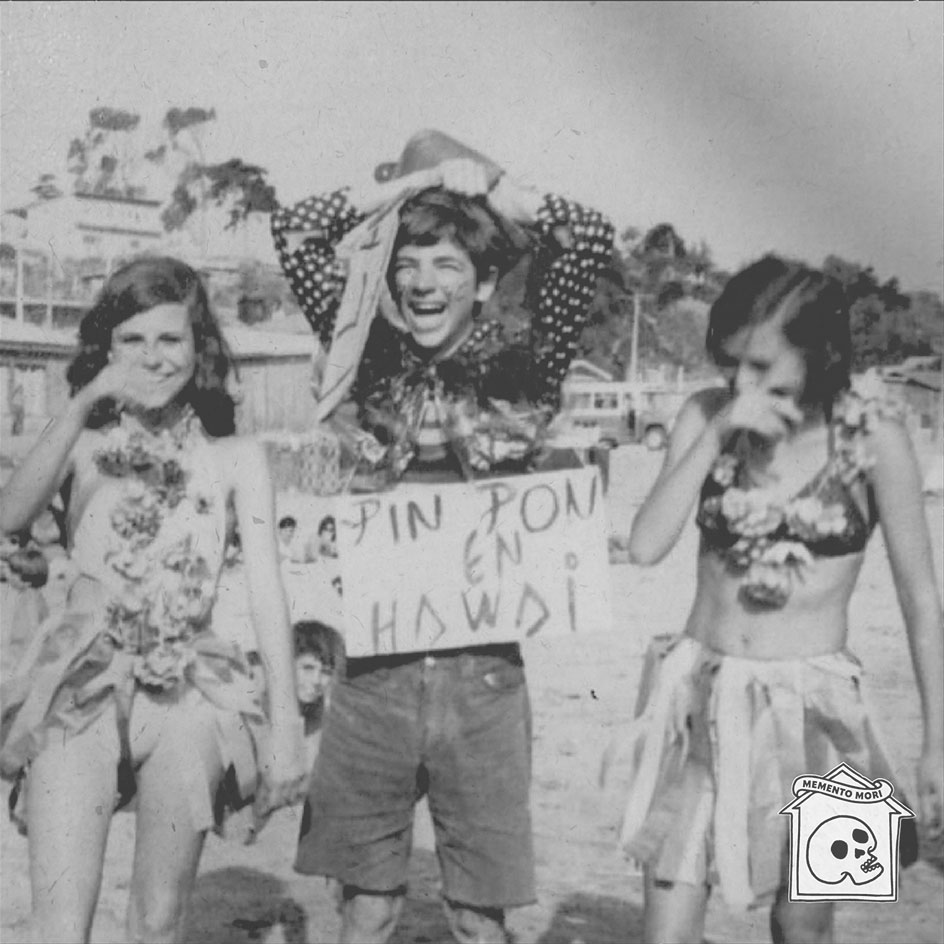
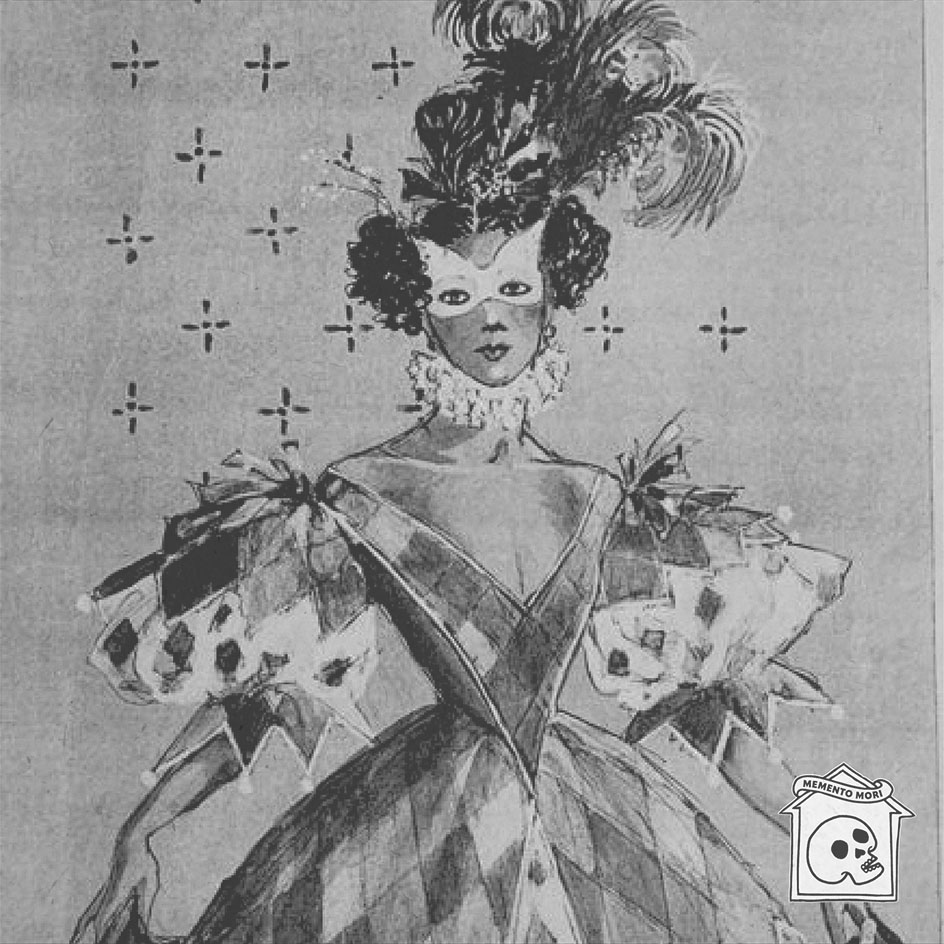
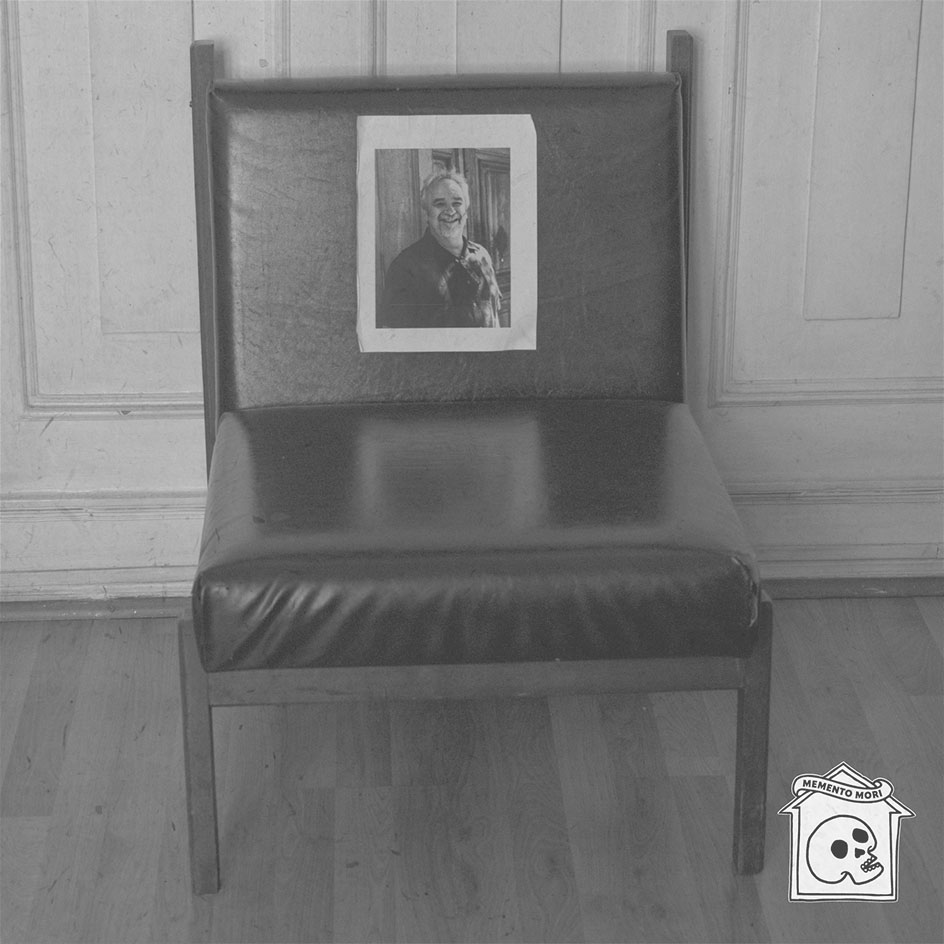
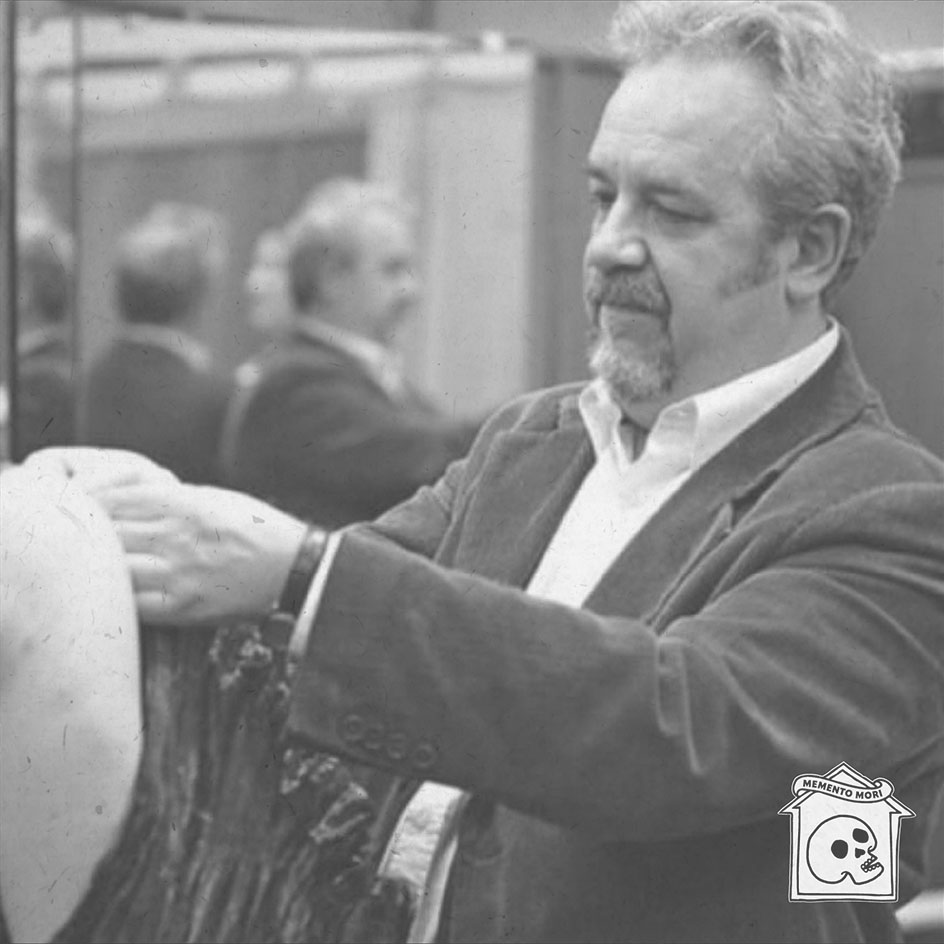


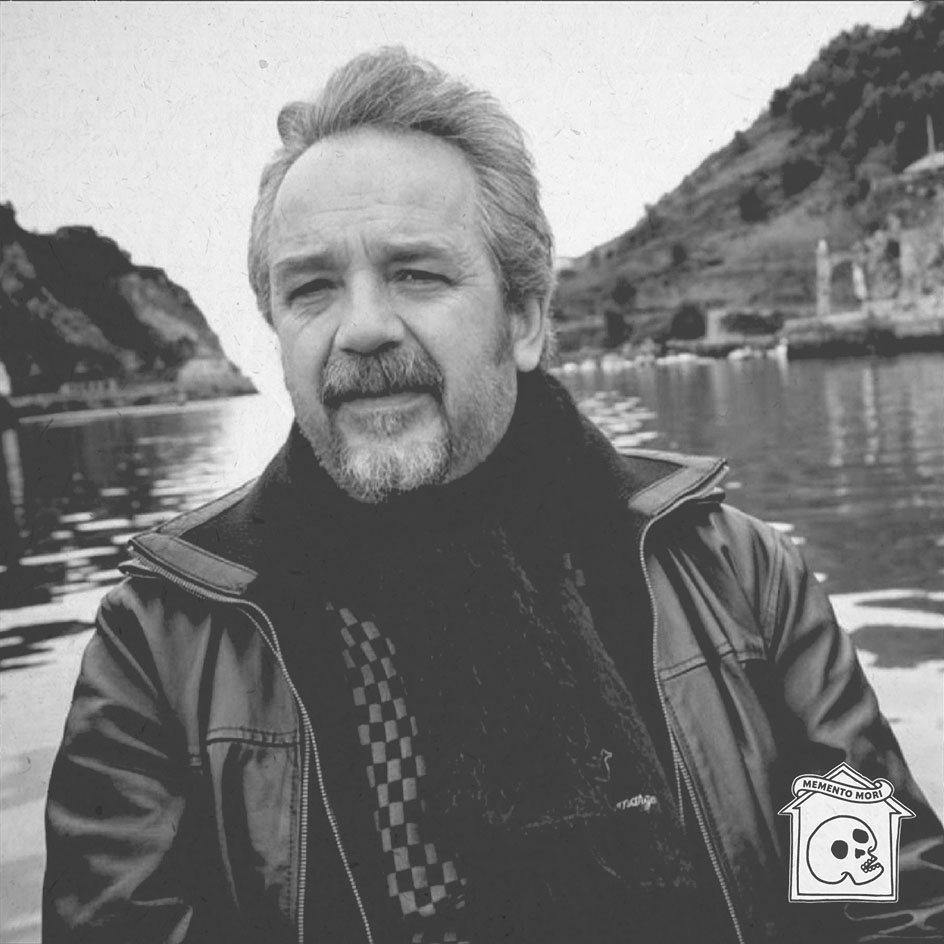
Germán Droghetti Perlwitz was born in Temuco in 1957. He attended the Instituto Nacional and went on to study design at the Universidad de Valparaíso, where he began a fruitful career in teaching and costume and stage design, where he excelled with works for ballet, opera and theater in Chile and Europe.
In the 80's he began working at the Teatro Municipal de Santiago, as a costume and set designer. Hence, he began an extensive career as a costume designer in theater, ballet, and operas such as Madame Butterfly or Aida. Droghetti was involved in a wide range of theatrical productions for over three decades. He founded the design department at the Teatro Municipal and was not only in charge of the spectacular costumes for shows such as Carmen or The Barber of Seville, but he also designed theater programs, advertisements, and graphic pieces.
He was also a member of the faculty at the Theater Department of the Universidad de Chile, where he trained generations of Chilean theater designers.
Germán Droghetti Perlwitz nació en Temuco en 1957. Estudió en el Instituto Nacional y luego Diseño en la Universidad de Valparaíso, dando inicio a una fructífera carrera en la docencia y en el diseño de vestuario y escenográfico, donde brilló con creaciones para obras de ballet, ópera y teatro en Chile y Europa.
En la década de los años 80' comenzó a trabajar en el Teatro Municipal de Santiago, como diseñador de vestuario y escenografía. Así inició una extensa carrera como diseñador de vestuarios en teatro, ballet y óperas como Madame Butterfly o Aída. Durante más de tres décadas Droghetti fue parte de los créditos de una gran cantidad de producciones de las artes escénicas. En el Teatro Municipal fue fundador del área de diseño y no solo estuvo a cargo de los espectaculares vestuarios de espectáculos como Carmen o El barbero de Sevilla, sino que también de programas de salas, avisos y piezas gráficas.
Por otro lado, fue académico del Departamento de Teatro de la Universidad de Chile, lugar donde formó generaciones de diseñadores teatrales chilenos.